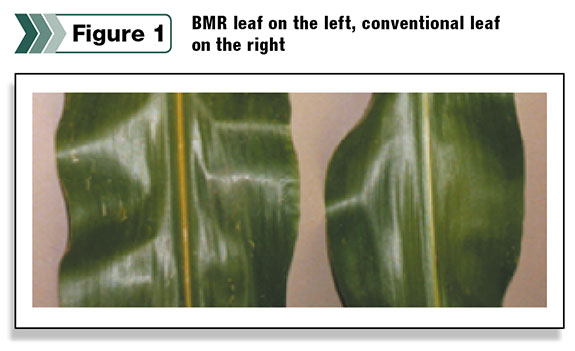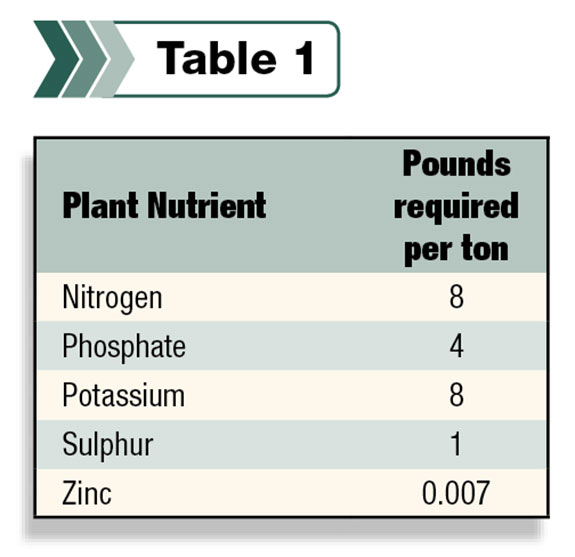This is the time to get your plans in place for all of your spring work. Corn silage is a vital part of the ration and should be treated as one of the most valuable crops on the farm.
This is the year for you to knock it out of the park and grow the best silage crop of your career. Hopefully the following tips will help you achieve this goal.
Hybrid selection
The first question to ask yourself when narrowing down which hybrid to grow is: What maturity are you comfortable planting?
Generally, selecting a hybrid that is five CRM (comparative relative maturity) longer than what you would typically grow for grain is a good starting point. For those still using heat units, this would be about 150 CHU.
This can be done due to the fact that we do not need the crop to mature all the way to dry grain. Be a little careful with this, as not every company rates their hybrids in the same manner.
Pushing the maturity of the hybrid that you plant as discussed pays back in added yield as longer-day corns generally have higher yield potential.
When choosing a silage hybrid, focus on the three most important traits: yield, starch content and fibre digestibility, in that order. Tonnage is primarily a function of plant density, plant height and starch content.
Because starch is a major driver of the energy concentration in silage, and given the current cost of supplemental energy in the ration, it must factor heavily in hybrid decisions.
Neutral-detergent fibre digestibility (NDFD) tends to be a major factor in hybrid selection, especially when talking to nutritionists.
Although there is a difference between hybrids for NDFD, the environment has a much bigger effect on this trait than genetics do (BMR excluded). This is why NDFD is a distant third compared to yield and starch when choosing a silage hybrid.

There are also decisions to be made as to the type of corn silage you grow.
Much has been discussed surrounding conventional versus brown mid-rib (BMR) corn silage for dairy rations (see Figure 1).
BMR corn silage will drive additional forage intake in the ration due to having a lower level of lignin and higher digestibility (five to seven points) than conventional corn silage.
This additional digestibility can lead to increased milk when balanced properly.
BMR hybrids are generally lower yielding (5 to 30 percent depending on the hybrid and geography) and tend to have weaker agronomic packages in terms of disease and/or drought resistance and standability than conventional corn silage hybrids.
Work done at the Miner Institute would suggest that BMR is most economical when fed to high-producing cows, fresh cows and close-up dry cows.
On the low group and heifers, it was a significant economic disadvantage compared to conventional corn silage. There are a few questions to ask yourself as a producer when making this decision:
1. Can I justify having two silos open to feed BMR separately, or am I willing to incur an economic loss on the low group and heifers for the advantage in the close-ups, fresh and high groups?
2. Can I afford to grow additional acres of corn silage (a 15 percent yield drag means 15 percent more acres are needed to fill the same silo) to compensate for the reduced yield and increased intakes expected with BMR silage?
3. Do I have the ability to ensure adequate peNDF in the ration through straw or hay supplementation to make up for the reduced lignin and peNDF that may result from feeding BMR?
If the answer to all three of these questions is yes, then BMR corn silage is certainly something you should be looking at as a component of your farming enterprise.
BMR has worked well for many producers and has disappointed others. To grow it or not is something you need to decide with the help of your nutritionist and agronomist.
Planting date
The ideal planting date for corn silage is no different than it would be to grow the perfect crop of grain corn. The optimal planting date in the Northern Corn Belt runs from April 20 to May 10.
Pioneer agronomists recommend waiting until soil temperatures reach seven degrees Celsius before planting to achieve maximum germination and stand.

The economic loss incurred by planting your corn silage late is much more significant than for grain corn. University of Wisconsin data in Figure 2 shows that corn silage planted between April 18 and May 25, on average, produced 8,200 kilograms milk per acre.
The interesting finding from this study was that the yield and nutritional value of the corn silage started to decline significantly after May 15, and by June 1, 580 kilograms of milk per acre were lost.
This may not seem like a big number, but if we think about this compared to corn grain at even $5 per bushel with a milk value of $0.70 per kilogram, we would have to have a yield reduction of 81.2 bushels per acre to be economically equal.
When I sit back and evaluate this, it makes sense to me.
If that acre of corn is not more valuable being put through a cow and making milk, why exactly are we milking cows instead of cash cropping?
Often I am asked about planting corn after taking off first-cut, and before seeing results like this, it seemed like it would be a good idea in order to improve forage inventories.
My recommendation now is that it may still be a good idea, but take it for grain corn to sell to the elevator or make a separate bunk, bag or silo for feeding dry cows and heifers. For me, I’m going to put my absolute best fields of corn into the bunk, bag or silo and feed it to my milk cows, because that’s where the real money is.
Plant population
Not all hybrids are created equal. Much like humans, some will perform well no matter how close they are to their neighbour, while others need their space to grow and flourish.
Every hybrid sold today should have a recommended planting rate that will give you the best performance. Work with your seed specialist on your farm to ensure that you have this information available well in advance of planting season.
One of the biggest drivers of increased yield over the past decades is the ability for modern hybrids to handle the stress of being planted close together much better than hybrid corn could 20 years ago.
Row spacing
For most of us, row spacing for our corn silage is predetermined by the planter that we already have. For some producers getting corn custom planted or looking for a new planter, this may be something to think about.
Corn planted in narrow rows has more equidistant plant spacing, decreasing plant competition for available water, nutrients and light. Research has been done showing a significant grain or silage yield response (3 to 10 percent) to narrow rows.
This work is particularly relevant for Canada and the Northern Corn Belt, which is limited in solar radiation and may be lacking fertility or soil moisture. Before moving to narrow rows, ensure your harvester has the ability to take this crop off effectively.
Planting depth
Planting corn at a depth of 1.5 to two inches (3.8 to five centimeters) is optimal for nodal root development. Planting too shallow can cause corn to be unable to uptake water and nutrients through the roots.
These plants can also develop a condition called “rootless corn syndrome,” where plants fall over due to the lack of nodal root development in the dry soil.
Symptoms of irregular planting depth include uneven emergence and varying plant height. It is recommended to set planting depth in the field when the planter is at full operating speed to check for good seed-to-soil contact.
Slowing the planting speed can help improve uniform planting depths. It is not recommended to plant corn any faster than five mph (eight km per hour).

Fertility
As with any crop, fertility in corn silage is extremely important.
Because we will be taking off the whole plant rather than just the grain, nutrient removal rates with corn silage are much greater than with grain corn. (See Table 1.)
Proper fertility of corn silage can improve forage quality tremendously, primarily by enhancing grain and therefore starch levels in our silage.
The starting point, as with any fertility program, is to soil test and understand where you are starting from.
Once this is determined, work with an agronomist to come up with the best plan to get your soil fertility levels in line for maximum production.
With corn silage, it is recommended that nitrogen rates should be increased by about 20 pounds per acre compared to grain requirements to help maximize the nutrient yields of the corn silage crop.
If you want to have great corn silage for 2014, the process starts now.
Taking a proactive approach to your forage management will pay dividends in these times of high feed costs. Starting your corn silage off right this spring will bring you bigger yields, more nutrition, and hopefully more milk in the tank once it gets from the seed, to the field, to the silo and finally into the cows. PD

- Robert Larmer
- DuPont Pioneer











